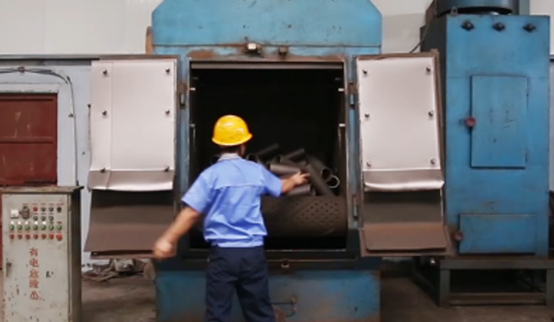 Afrikaans
Afrikaans  Albanian
Albanian  Amharic
Amharic  Arabic
Arabic  Armenian
Armenian  Azerbaijani
Azerbaijani  Basque
Basque  Belarusian
Belarusian  Bengali
Bengali  Bosnian
Bosnian  Bulgarian
Bulgarian  Catalan
Catalan  Cebuano
Cebuano  Corsican
Corsican  Croatian
Croatian  Czech
Czech  Danish
Danish  Dutch
Dutch  English
English  Esperanto
Esperanto  Estonian
Estonian  Finnish
Finnish  French
French  Frisian
Frisian  Galician
Galician  Georgian
Georgian  German
German  Greek
Greek  Gujarati
Gujarati  Haitian Creole
Haitian Creole  hausa
hausa  hawaiian
hawaiian  Hebrew
Hebrew  Hindi
Hindi  Miao
Miao  Hungarian
Hungarian  Icelandic
Icelandic  igbo
igbo  Indonesian
Indonesian  irish
irish  Italian
Italian  Japanese
Japanese  Javanese
Javanese  Kannada
Kannada  kazakh
kazakh  Khmer
Khmer  Rwandese
Rwandese  Korean
Korean  Kurdish
Kurdish  Kyrgyz
Kyrgyz  Lao
Lao  Latin
Latin  Latvian
Latvian  Lithuanian
Lithuanian  Luxembourgish
Luxembourgish  Macedonian
Macedonian  Malgashi
Malgashi  Malay
Malay  Malayalam
Malayalam  Maltese
Maltese  Maori
Maori  Marathi
Marathi  Mongolian
Mongolian  Myanmar
Myanmar  Nepali
Nepali  Norwegian
Norwegian  Norwegian
Norwegian  Occitan
Occitan  Pashto
Pashto  Persian
Persian  Polish
Polish  Portuguese
Portuguese  Punjabi
Punjabi  Romanian
Romanian  Russian
Russian  Samoan
Samoan  Scottish Gaelic
Scottish Gaelic  Serbian
Serbian  Sesotho
Sesotho  Shona
Shona  Sindhi
Sindhi  Sinhala
Sinhala  Slovak
Slovak  Slovenian
Slovenian  Somali
Somali  Spanish
Spanish  Sundanese
Sundanese  Swahili
Swahili  Swedish
Swedish  Tagalog
Tagalog  Tajik
Tajik  Tamil
Tamil  Tatar
Tatar  Telugu
Telugu  Thai
Thai  Turkish
Turkish  Turkmen
Turkmen  Ukrainian
Ukrainian  Urdu
Urdu  Uighur
Uighur  Uzbek
Uzbek  Vietnamese
Vietnamese  Welsh
Welsh  Bantu
Bantu  Yiddish
Yiddish  Yoruba
Yoruba  Zulu
Zulu Essential Components of Roller Conveyor Systems for Efficient Material Handling
Understanding Roller Conveyor Parts Essential Components for Efficient Material Handling
Roller conveyors are essential equipment in various industries, facilitating the movement of goods and materials. These systems are favored for their efficiency and versatility, making them a critical component in warehouses, manufacturing facilities, and distribution centers. This article explores the fundamental parts of roller conveyors and how they contribute to streamlined operations.
1. Rollers
At the heart of any roller conveyor system are the rollers themselves. These cylindrical components are designed to support and transport items along the conveyor line. Rollers can be made from various materials, including steel, plastic, and aluminum, depending on the type of materials being transported and the environmental conditions. The selection of roller material is crucial for ensuring durability and efficiency. For heavy loads, steel rollers are often used, while lighter applications may utilize plastic rollers for cost-effectiveness and reduced weight.
Rollers can also be designed with different diameters and widths to accommodate various sizes of packages and products. Moreover, they can be configured for different operating speeds and load capacities, making them highly customizable for specific applications.
2. Frames
The conveyor frame serves as the backbone of the system, providing structural support for the rollers and overall assembly. Frames are typically constructed from steel or aluminum, and their design can vary significantly based on the conveyor's intended use. A robust frame ensures stability and durability, helping to withstand heavy loads and repetitive use.
Frames can also be engineered with features such as adjustable heights and modular designs, allowing for easy integration into existing layouts and system expansions. A well-constructed frame not only supports conveyor functionality but also enhances overall safety for operators and maintenance personnel.
Most roller conveyors require a drive mechanism to propel the rollers and facilitate the movement of materials. This is commonly achieved through the use of motors, which can be directly linked to certain rollers via belts or chains. The drive mechanism's power and configuration will depend on the size of the conveyor, the weight of the materials being transported, and the desired speed of operation.
roller conveyor parts

Drive systems can be categorized into two main types live roller conveyors and non-powered (gravity) systems. Live roller conveyors use powered rollers to drive product flow, while gravity conveyors rely on the force of gravity to move items downhill or on an incline.
4. Supports and Legs
Support structures, including legs and brackets, are crucial for maintaining the integrity of the conveyor system. These components are designed to bear the weight of the conveyor as well as any materials being transported. Proper installation and adjustment of supports ensure that the conveyor remains stable and operates efficiently.
Adjustable legs can accommodate varying heights and uneven floor surfaces, providing flexibility in setup and ensuring ergonomic operation. The design of support structures is vital in promoting safety, as inadequate support can lead to accidents or damage to both the conveyor and the items being handled.
5. Belts and Accessories
In many roller conveyor systems, conveyor belts and additional accessories play essential roles in enhancing productivity. Conveyor belts serve to hold and guide items along the conveyor, while accessories like side rails, guides, and end stops improve safety and efficiency.
Accessories can also include sensors and automation devices that facilitate tracking, sorting, and controlling the flow of materials. Implementing these features is increasingly important in modern automated warehouses and distribution centers, allowing for seamless operations and increased throughput.
Conclusion
Understanding the critical parts and components of roller conveyor systems is essential for businesses operating in material handling sectors. By focusing on the quality and configuration of rollers, frames, drive mechanisms, supports, and accessories, companies can invest in reliable and efficient systems that significantly enhance their operational capabilities. Ultimately, the right roller conveyor setup not only increases productivity but also ensures a safe and organized workspace, proving to be a worthy investment for any business.
-
Revolutionizing Conveyor Reliability with Advanced Rubber Lagging PulleysNewsJul.22,2025
-
Powering Precision and Durability with Expert Manufacturers of Conveyor ComponentsNewsJul.22,2025
-
Optimizing Conveyor Systems with Advanced Conveyor AccessoriesNewsJul.22,2025
-
Maximize Conveyor Efficiency with Quality Conveyor Idler PulleysNewsJul.22,2025
-
Future-Proof Your Conveyor System with High-Performance Polyurethane RollerNewsJul.22,2025
-
Driving Efficiency Forward with Quality Idlers and RollersNewsJul.22,2025





























